Often called “The Wexford” by pipers, the hornpipe “Plains of Boyle” used to often be played in the set “Plains of Boyle > Leitrim Fancy” at the beginning of the twentieth century. You can hear a snippet of a 78rpm recording from 1924 of the piper Michael J. Gallagher playing the tune in that set. The mp3 is posted on Internet Archive, which is an amazing resource for many things, and also hosts the Wayback Machine. Anyway, and just so you know, Gallagher was a Leitrim flute player, but moved to the States where he met Patsy Touhey (1865-1923) — who Capt. Francis O’Neill (1848-1936) describes as a “wizard” on the pipes — and as a result of their meeting Gallagher picked up the pipes. Unsurprisingly, Gallagher plays in the Touhey style. He apparently developed quickly, as O’Neill comments that Gallagher was “a clever performer on the Irish or Union pipes, recently from Ireland” (Waifs and Strays, 1922). Gallagher was first a stage performer, and only started recording in the mid-1920s. This same “Gallagher-set” is played by Willie Clancy (1918-1973) and can be found on Youtube, but Clancy’s setting of “Plains of Boyle” is in A. It has remained a popular tune on both sides of the pond, and was also recorded by James Morrison (1891-1947) in 1929, and Leo Rowsome (1903-1970) in 1933. More recently it was recorded by John McGreevy and Séamus Cooley on the album McGreevey & Cooley (1974), by Kieran Hanrahan on banjo on Kieran Hanrahan Plays the Irish Tenor Banjo (1998), by Paddy Keenan and Paddy Glackin on their CD Doublin’ (2000), by James Kelly on his CD Capel Street (2004), by Lehto and Wright on guitar on their CD A Game of Chess (2004). Most recently it can be found on our own Turlach Boylan’s CD Lift (2011).
Today the tune is most commonly played in D, with a c natural in the fourth measure, as it was played by Gallagher. Though it is sometimes asserted to be in Dmix with a c sharp in the third measure, and though there is admittedly a small bit of chordal ambiguity, I think it is pretty clearly in D rather than Dmix. As the actual plains of Boyle are in the northern part of co. Roscommon, the tune is sometimes called “North Roscommon Airport,” or even “Pains and Boils.” The folks at Dusty Banjos, run by Mary Lovett in Galway, have a slow version on the page for their Beginner’s Class (just scroll down for a close version played on Concertina). Though it can be played with any other tune you like, you might try it in a set with any of the following: “Eamonn McGivney’s Hornpipe” (Eaeol), “Home Ruler” (D), “Chief O’Neill’s Favorite” (D), “Dinny O’Brian’s” (Dmix), “The Wonder” (G), or “Murphy’s Hornpipe” (G) — this last is in fact what follows “Plains of Boyle” on Turlach Boylan’s Lift (2011).
For the ABC click Plains of Boyle
Plains of Boyle, slow tempo (mandolin, Dave Agee)
Plains of Boyle, med tempo
Plains of Boyle, the dots
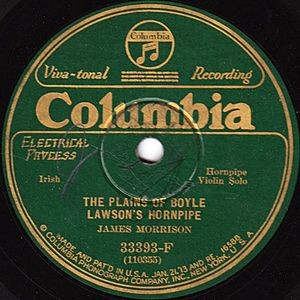
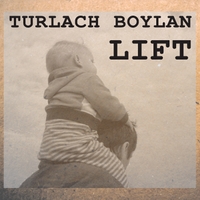
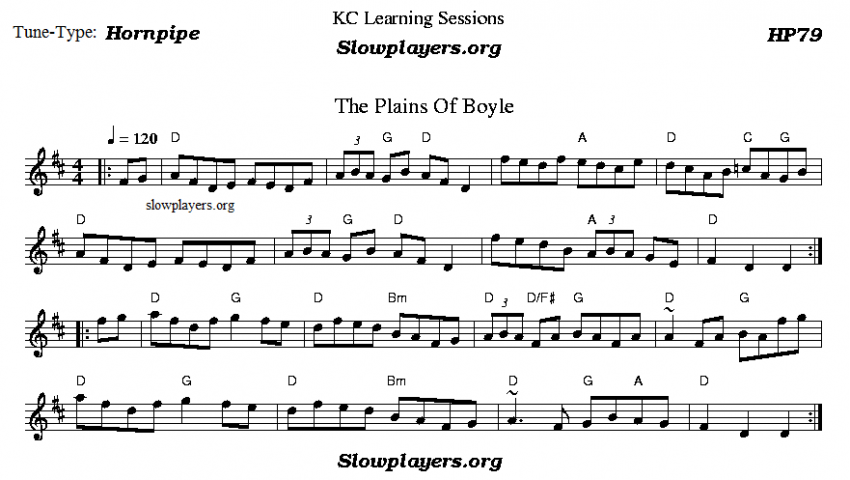
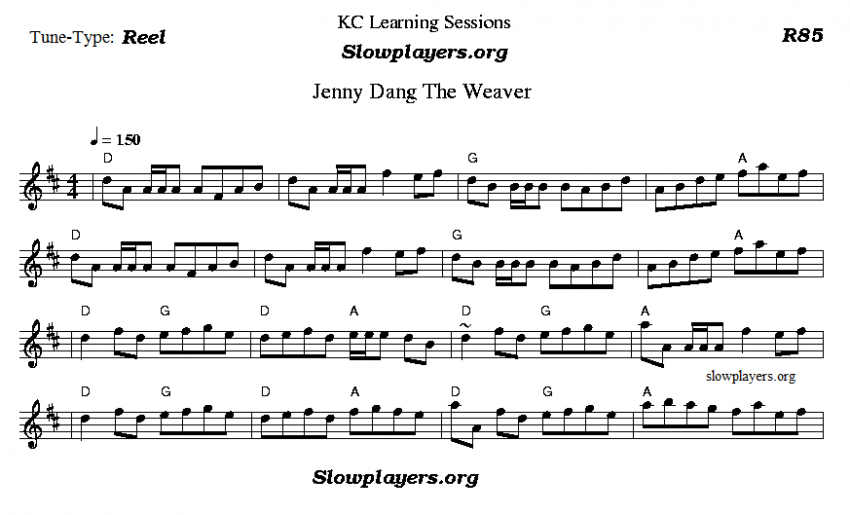
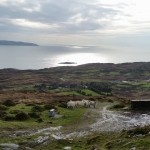
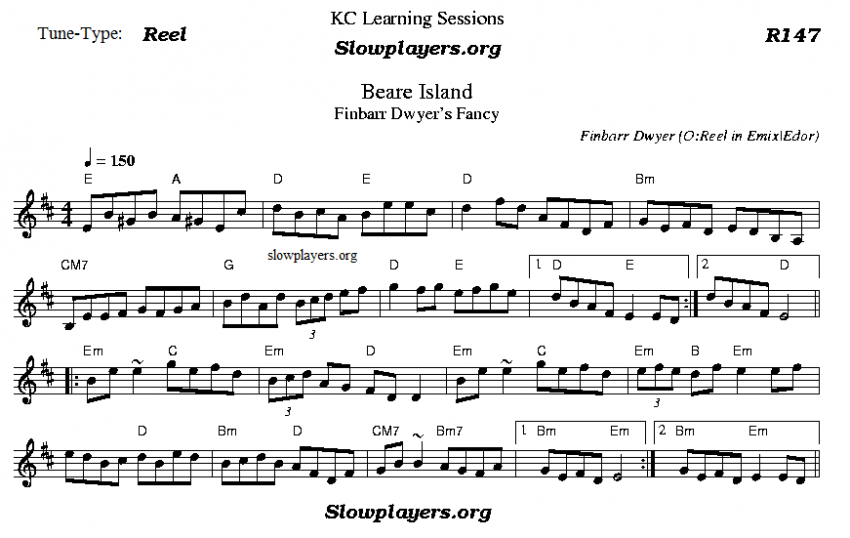
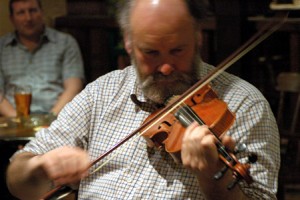
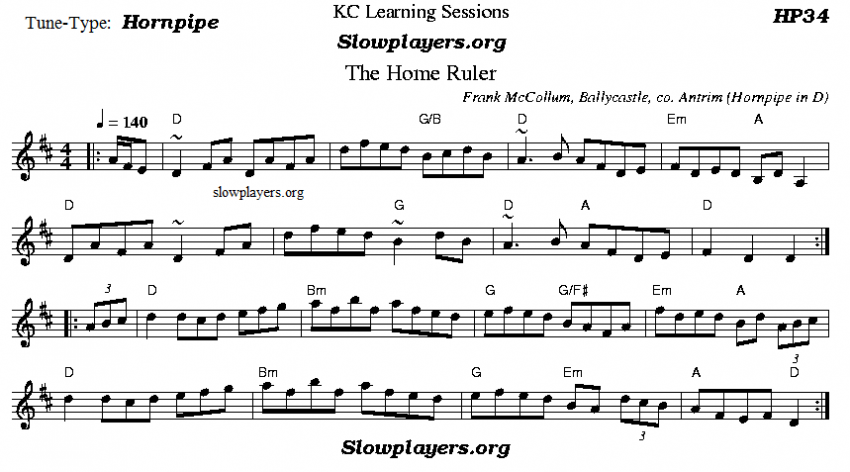
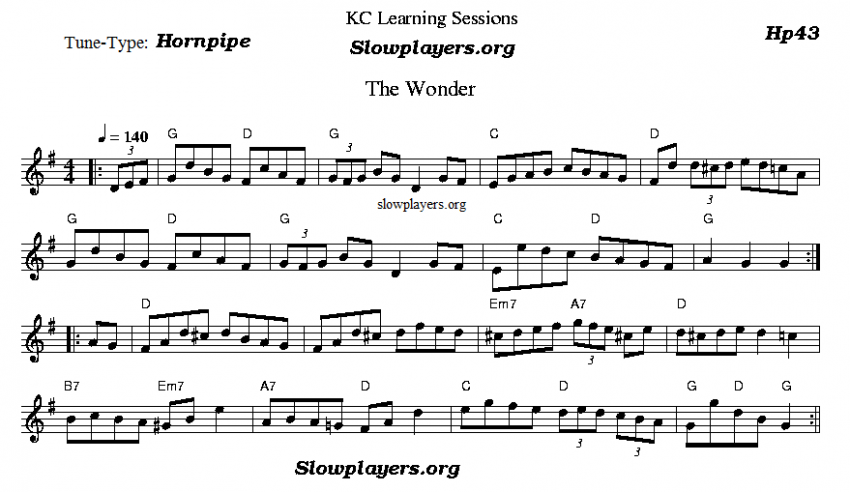
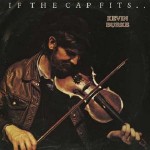
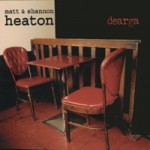
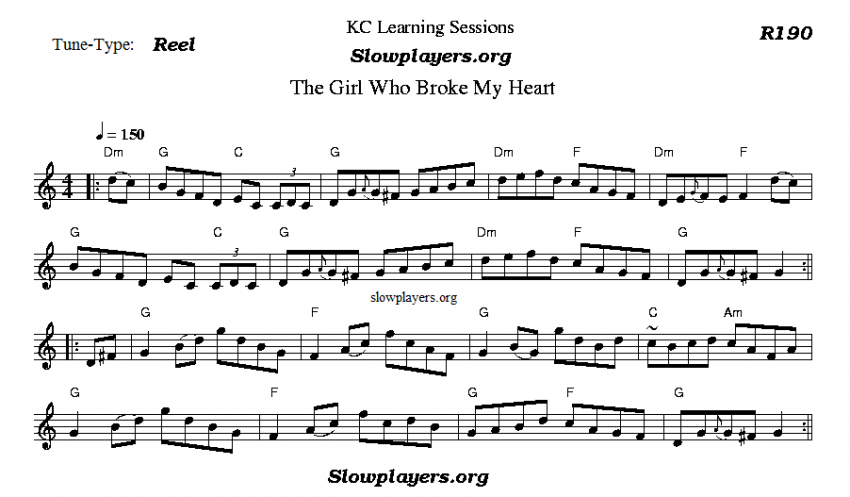
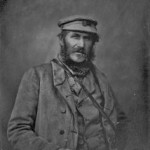
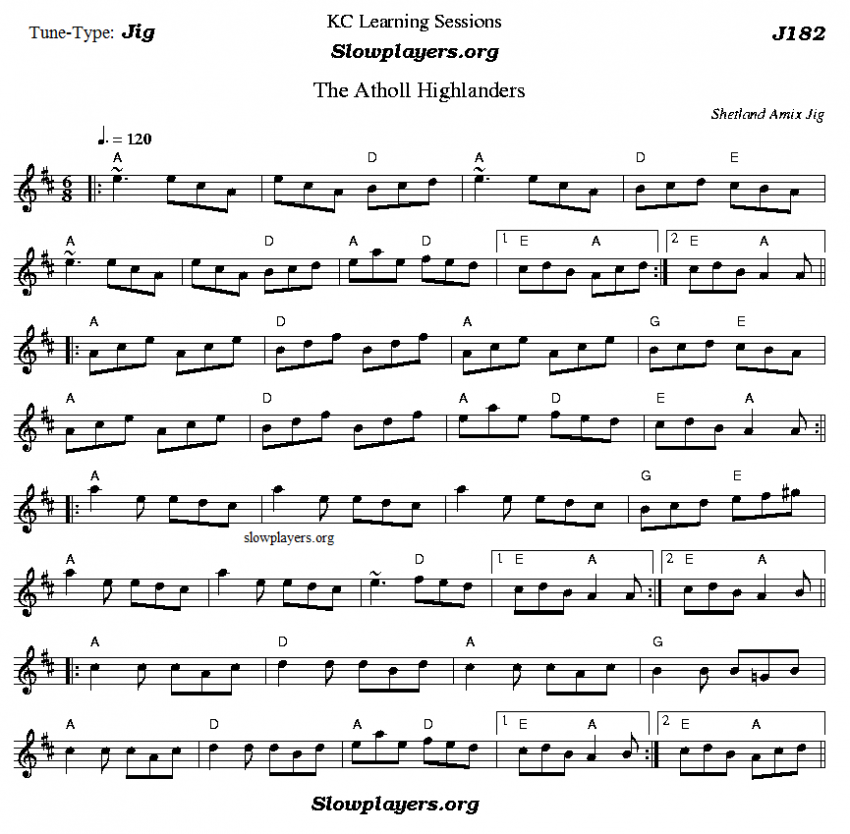
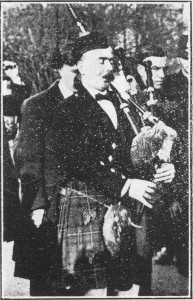
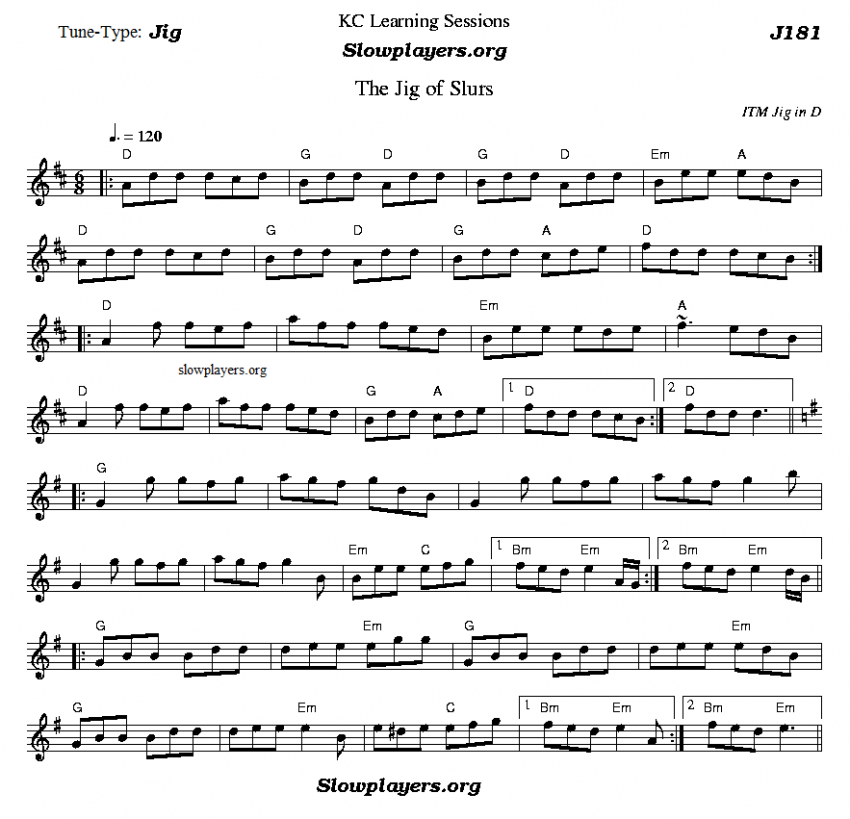
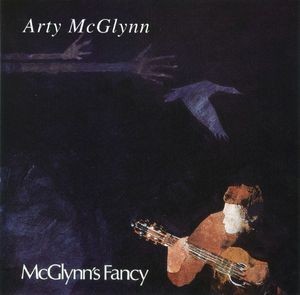
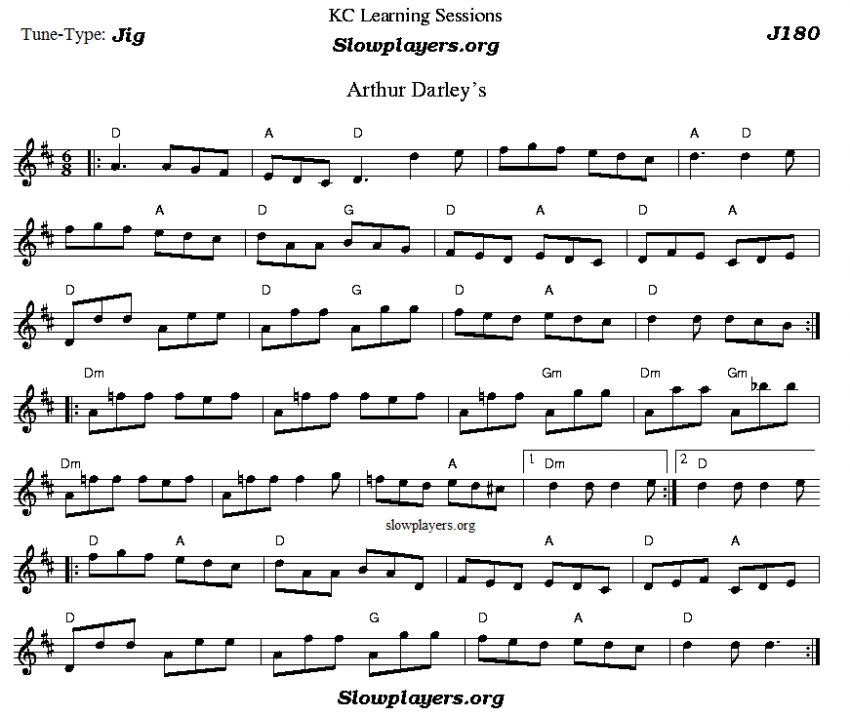
The Brosna Slide #1 (G)
Donal O’Connor, Rushy Mountain (2004)
I learned this slide as “The Brosna,” as have many others. However, many years ago I learned another slide called “The Brosna,” and then came to find still other slides called “The Brosna.” The fact that there are many tunes by this name is probably due to the playing of the Brosna Céili Band from North Kerry in the Sliabh Luachra region where slides are very popular — the band was named after the town of Brosna (Brahs-nach) founded in 1837. Then there are the three slides called simply “The Brosna Slides” and associated with Dónal O’Connor’s recording on Rushy Mountain (2004). They are “The Brosna Slide #1 > Scartaglen Slide > Padraig O’Keeffe’s Favourite” — at least this is what they are sometimes called — and each of them has been called “The Brosna Slide.” In short, there is just no telling what someone might mean when calling a tune “The Brosna Slide,” at least not until you hear it. As our tune here is also known as “The Lonesome Road to Dingle” I have recently been calling it that, but this is also confusing as there is a polka with this name too! Still, I am posting this as “Brosna Slide #1” since plenty of people know it by the name I first learned. It is a Sliabh Luachra (schleave lewkra) slide, which is a popular place for slides and polkas to habitate. Sliabh Luachra, meaning “Mountain of Rushes,” is a mountainous region which was once an uninhabited marshy area of the old Kingdom of Luachra. The boarders are not clearly defined, but it is at the intersection of three counties (Cork, Kerry, and Limerick) though often more simply described as along the Cork/Kerry border. It is renowned for its musical style and for producing some of the great (southern) Irish players.
For the ABC click Lonesome Road to Dingle
Brosna Slide #1, med tempo (Glen Pekin, fiddle)
Brosna Slide, the dots
The Brosna Slide #1